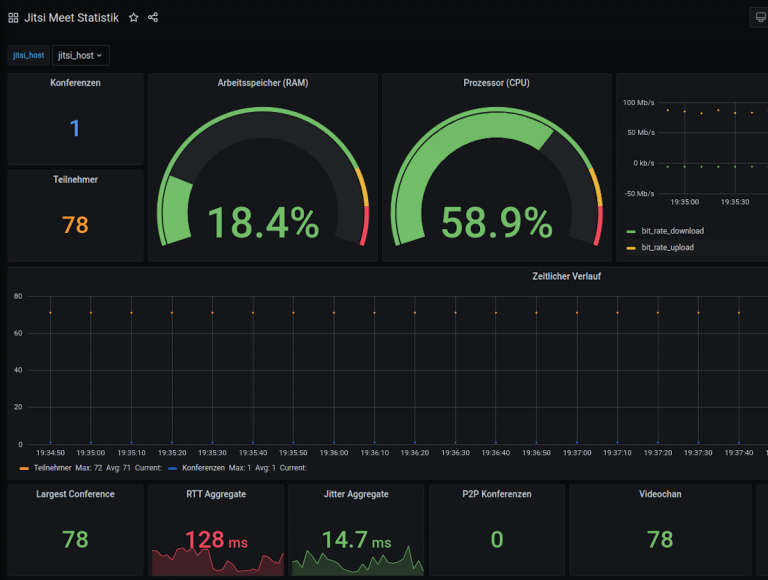

Jitsi Meet supports blurred backgrounds which is kind of nice. Another minor advantage is that the Zoom client on Linux doesn't support virtual backgrounds, so my messy home office is always visible in calls. It seems to have at least comparable call quality to Zoom. Overall, I'm very happy with how this is working so far. In total, bandwidth costs between 2–3¢/hour/participant. In my limited testing, it appears that running a Jitsi meeting uses around 250MB/hour/participant.
#Jitsi meet aws free
Uploads from EC2 are free for the first 1GB/month, but costs 9¢/GB after that. The other cost comes from data transfer fees. This setup costs 10.8¢/hr to run, and another 0.5¢/hr ($3.60/mo) when it's not in use to reserve a static IP address. I decided to set up a server using Amazon EC2, which allows me to start and stop my server on demand, and only pay for the resources I actually use.
#Jitsi meet aws software
But the beauty of FOSS software is that you're welcome to set up a self-hosted server that you control, where you can be sure your data is secure. Using the Jitsi Meet demo server isn't necessarily any more secure than Zoom, as the video is only encrypted between client-server.

Everything's run from your browser (an app is required on mobile, and the desktop web client only works in Chrome/Chromium browsers, for now). No accounts or software installation required. They host a free demo server at which allows you to easily make a meeting room and invite as many people as you'd like with even less hassle than Zoom. But they also offer standalone server software called Jitsi Meet. At some point the project was bought by a VoIP service called 8X8 who offer to integrate video chat functionality into corporate client software. Turns out that Jitsi, the old XMPP chat server software, has been quietly improving behind the scenes to enable most of these features with similar ease of use and quality to Zoom, all using open source software and standard WebRTC protocol. Alternatives like Skype or WhatsApp require installing software, and more security conscious options like Signal don't support group calls at all. My grandparents are already using it for classes they're involved with, and clicking a single link is all that's required to join a call. Even for family chats where there are more than two participants, it seems to be the only workable solution. We all seem to be stuck using Zoom because it's very easy to use, supports large group meetings, and consistently delivers good call quality. Many government agencies and industries have now banned Zoom, the FBI recently issued a warning about Zoombombing, and some state attorney generals are looking into the company's privacy practices.

Zoom has also been sharing data with Facebook, seemingly in violation of its own privacy policy. Of course Zoom has numerous security flaws, including a recent bug that allowed malware to easily access your webcam. That's mostly a response to being otherwise isolated, but has been made possible by the existence of simple and reliable group video chat software like Zoom. We've been doing more frequent video chats, and including my grandparents in meetings semi-regularly. With everyone stuck at home these days I've actually found myself much more closely connected with family than usual.


 0 kommentar(er)
0 kommentar(er)
